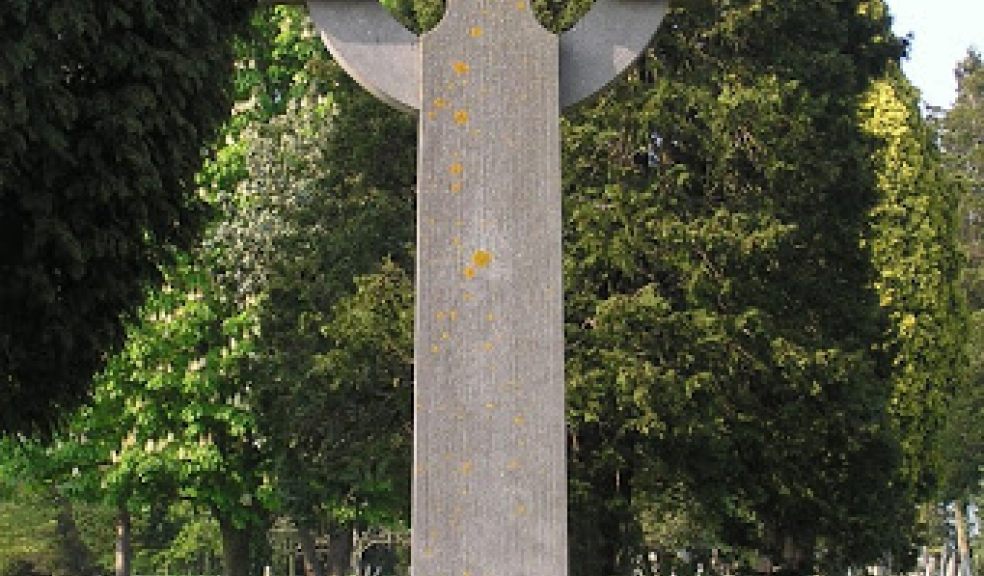
Hunt for Devon and Cornwall's secret, forgotten or unknown memorials announced
Devon and Cornwall is home to murals and shrines, statues, inscriptions on benches and trees - from a memorial to those who lost their lives in the worst theatre fire in British history in 1887 to a commemorative stone engraved to celebrate John Wesley, the founder of Methodism.
Now, as part of a nationwide call-out, Historic England is asking people in Devon and Cornwall to share their knowledge of secret, unknown and forgotten memorials in the area.
The public body responsible for championing and looking after England’s historic environment wants photographs and information about the Devon and Cornwall’s lesser-known memorials, and those that are well-loved by small groups or communities but unknown nationally. They are also looking for rituals and activities attached to memorials. The public’s stories and pictures will be recorded to form part of an exhibition in the Autumn. The best examples of community memorials may be listed by Historic England as part of its efforts to protect and champion what’s special in the historic environment.
The hunt is part of Immortalised, a season launched today by Historic England to help people explore the country’s memorial landscape – who is reflected, who is missing, and why. It will include events, an exhibition, a debate and a design competition.
A series of well-documented challenges to the memorials of figures including Cecil Rhodes and Edward Colston, and the absence of representations of women and people of colour from statues in our cities and squares has brought the subject to the fore in recent months. The historian and commentator David Olusoga has dubbed recent rows ‘the history wars’. Olusoga has been named as one of the participants in a live debate that is being organised by Intelligence Squared as part of Immortalised, in partnership with Historic England. The event, 'Contested statues: how should we memorialise the past?' will take place on 14 May 2018. Tickets can be purchased at www.intelligencesquared.com.
Immortalised will address a well-documented dearth of women, working people and people of colour in England’s collection of statues. But it will also explore the fact that we have monuments and statues that memorialise people from all walks of life and tell fascinating stories, often tucked away from the well-visited spots in our cities.
Memorials in Devon and Cornwall
Theatre Royal Fire memorial, Heavitree, Exeter
On 5 September 1887, the worst theatre fire in British history happened at the Theatre Royal. Fire broke out backstage where gas lighting ignited some gauze. The number of exits from the gallery of the auditorium proved to be inadequate and in the panic, 186 people died. It has been reported that a national appeal for donations for the victims’ families raised more than £20,000 and the event was influential in the introduction of safety precautions for public buildings. There is a memorial to those who died in the fire in Higher Cemetery, Heavitree.
Wesley Commemorative Stone, Mullion, Cornwall
This commemorative stone was engraved shortly after 1762 to celebrate the visit of leading Methodist, John Wesley to Mullion. John Wesley, founder of Methodism and a significant religious figure in the latter part of the 18th century, preached throughout Britain for 50 years and visited Cornwall on 32 occasions. His influence on the area was considerable and details of his visits are known from his published journals. On 7 September 1762, John Wesley arrived in Mullion at the invitation of Ursula Triggs, whose husband farmed at Angrouse. In 1767 there were 45 Methodist members at Mullion and the inscribed stone commemorating their special day was likely engraved shortly afterwards.
South West YouGov poll findings on public attitudes to memorials
New research by YouGov for Historic England shows that one in six (16%) people in the South West have created a memorial of their own.
Despite recent ‘history wars’ and calls for more representation of women, the majority (69%) of those polled in the South West say that the people represented by our public monuments reflect those who have made a significant contribution to our history.
However, across England, there is a marked difference in attitude between older and younger people; almost twice as many people aged 18-24 (20%) say they disagree that our public monuments represent those who have made a significant contribution as those aged 55+ (12%).
Duncan Wilson, Chief Executive of Historic England said: “We are creatures of memory, and every generation has commemorated people in the built environment. Their stories may involve episodes of heroism or generosity and be inspirational, or they may involve episodes which are shameful by today’s standards. They all tell us something about the lives of our ancestors. This is a terrifically important subject and that’s why we have launched the Immortalised season.
“One of Historic England’s most important jobs is to work with the public to identify and record information about what’s embedded in our streets, squares and parks, and to share it with others to enable current and future generations to understand and value their local historic environment. Exploring the stories and histories of less well-known people and groups is an important part of this, and that’s what today’s call out to the public in Devon and Cornwall is all about.”
From flowers left at the Alan Turing statue in Manchester on his birthday, to the annual service on the pavement beneath Oliver Cromwell in Westminster, a number of statues and memorials have regular rituals attached to them that keep their stories alive.
Immortalised will not tackle the subject of war memorials, which have been the subject of a separate four-year programme by Historic England to mark the centenary of the First World War, which had an enormous impact on England’s memorial landscape.
More information about the season can be found on Historic England’s website – www.historicengland.org.uk/immortalised


















